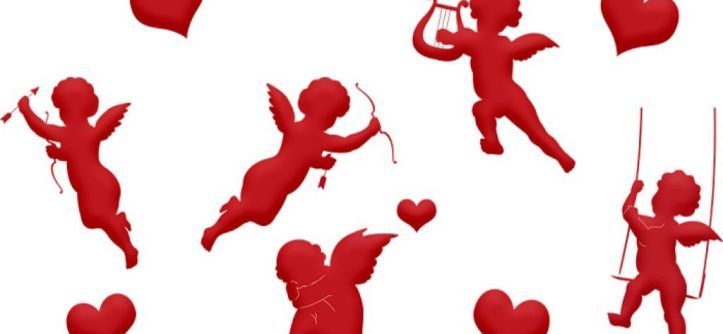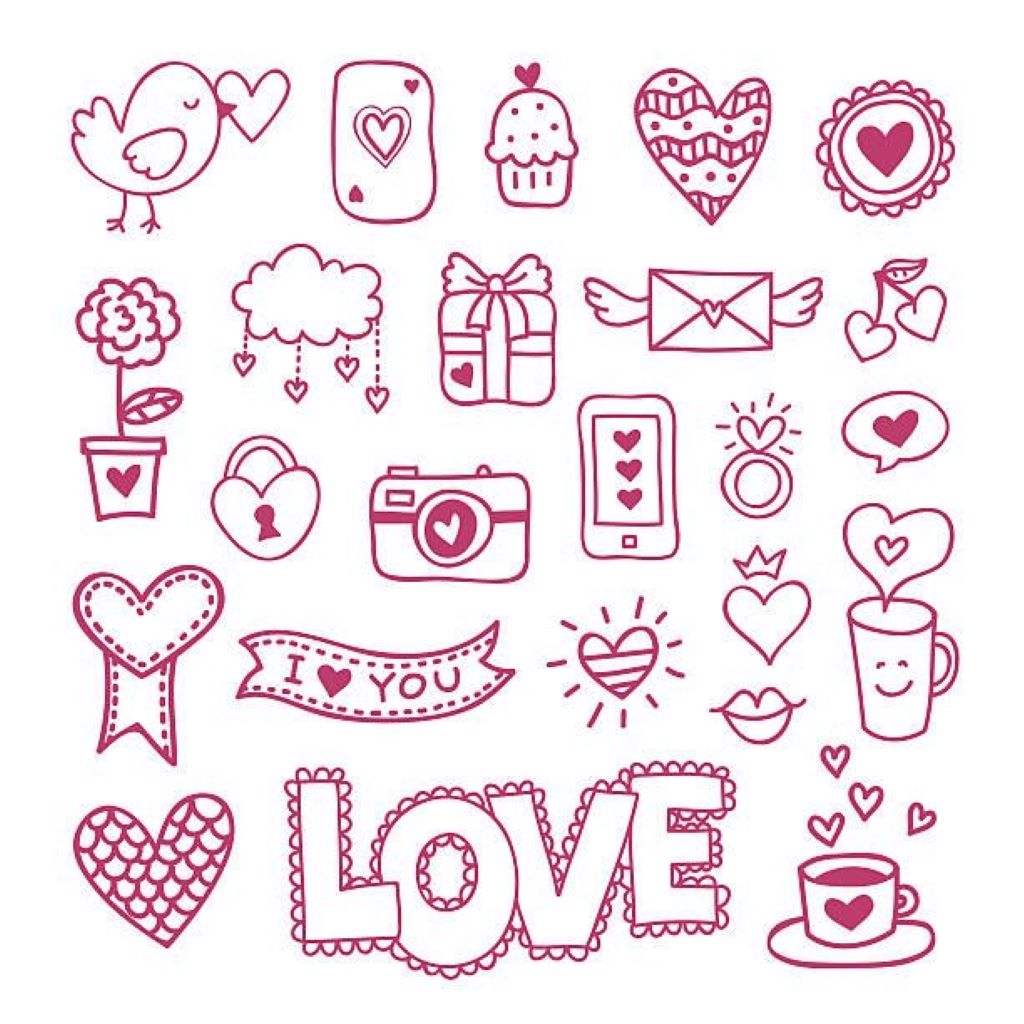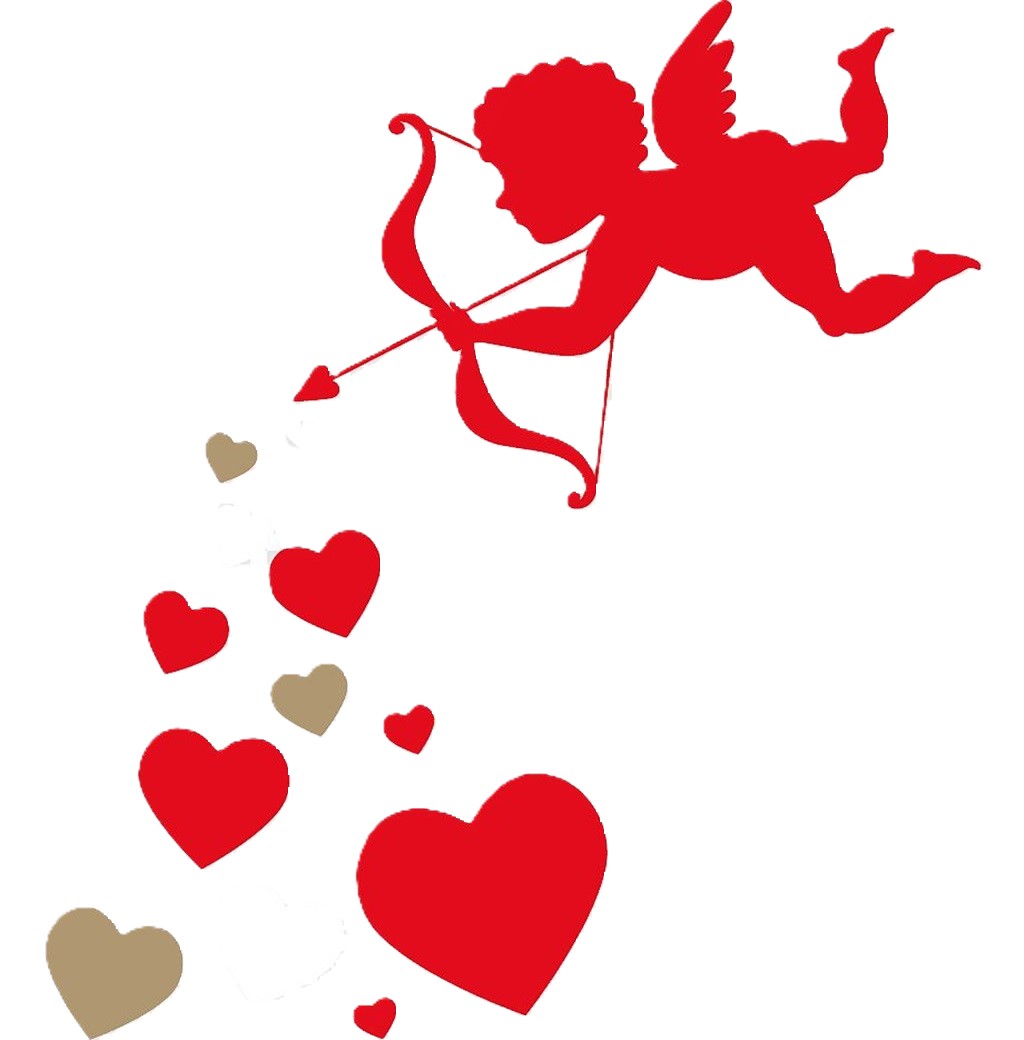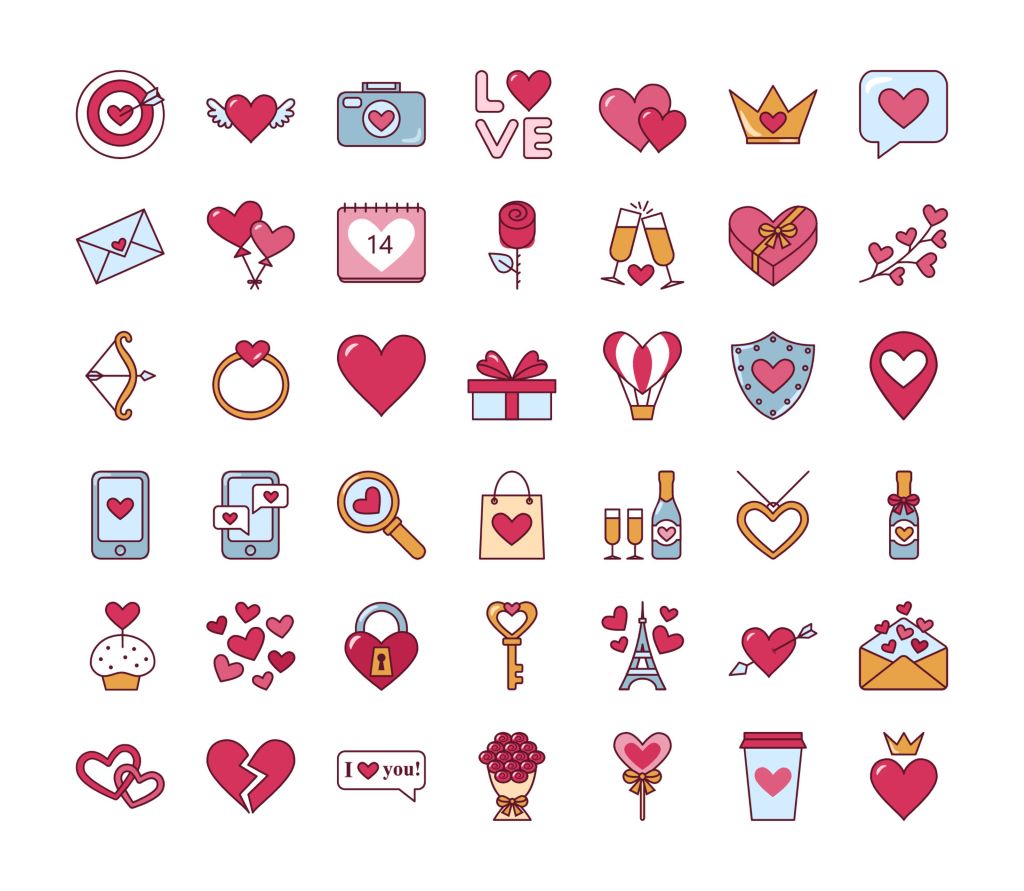Valentine’s Day is filled with recognizable icons and symbols that help represent the themes of love and affection associated with the holiday. From the ubiquitous red heart to Cupid’s arrow, these Valentine’s symbols have become shorthand for conveying romantic sentiments. This article explores the origins and meanings behind the visual imagery and metaphorical associations of Valentine’s Day symbols.
The Heart
The heart shape is the most iconic and universally recognized symbol of love and romance. Valentine’s Day imagery is awash in big red heart decorations, heart-shaped boxes of chocolate, and heart motifs on cards and clothing. But did you ever wonder how the actual organ that pumps blood evolved into the preeminent symbol for love?
Origin as a Shape
The heart shape as we know it today actually does not closely resemble the anatomical human heart. However, the symmetrical and curved ventricular shape loosely inspired the stylized heart symbol. In early depictions, the heart shape was more anatomically correct, tilted to the side and featuring chambers and veins. Over time, it became increasingly stylized into the formulaic shape used symbolically today: a symmetrical curve topping a V-like shape.
Early Use in Romance
Some of the earliest known uses of heart shapes stem from medieval depictions of romance and courtship. Hearts were drawn into scenes of amorous couples and on notes between them as representations of their affection. The 14th-century French poem The Romance of the Pear includes a heart shape in a scene where a lover pledges devotion.
By the 1500s, the secular association of the heart shape with romance and love was commonplace. Heart motifs appeared on all forms of material goods associated with marriage, betrothal, and affection. Giving gifts decorated with hearts became a popular part of courtship rituals.
later Cultural Meanings
By the Victorian era, heart symbols were ubiquitous and retained their romantic connotations. Heart designs became a staple motif for jewelry gifts between lovers. The development of greeting cards in the mid 19th century coincided with more heart imagery to denote affectionate intent.
In the 20th century, heart symbols became further cemented in pop culture through widespread use in advertisements, clothing, décor, and media. Hearts were adopted into the visual lexicons of Disney movies and Looney Tunes animation. The rise of emojis in the digital age introduced new iterations of the red heart symbol as shorthand for love.
Today, the legacy of the heart as the premiere symbol of love and Valentine’s Day is comprehensive. It universally communicates passionate emotions.
The Color Red
Speaking of ubiquitous Valentine’s symbols, it is nearly impossible to escape the proliferation of red during mid-February. Why has this vibrant hue become the color most closely associated with Valentine’s Day and colorful expressions of love in general? The color psychology behind red offers insight into its romantic symbolism.
Passion and Desire
In color psychology, red is tied to passion, desire, intensity, and excitement. Research on color symbolism shows red can raise pulse rates and provoke reactions consistent with excitement and attraction. So its associations with Valentine’s Day themes of lust and romance come naturally.
Throughout history, red attire has been associated with sex appeal and illicit passion. Studies also show that when women wear red they are perceived as more desirable and sexually receptive. Consequently, red is an ideal shade for stimulating romance on Valentine’s Day.
Love and Affection
Beyond just sexuality, red also relates to love and affection in color psychology. The vibrant hue is the color of the heart and blood. Red is the color of strong emotions and attachments. Used in relationship contexts, red can signify deep bonds, lasting commitment, and cherished love.
Vibrancy
Red’s attention-grabbing vibrancy adds to its romantic symbolism. The eye focuses first on red in the color spectrum, making it ideal for bold declarations of love. When given as Valentine’s gifts or on cards, red roses and objects make the sentiments stand out. Red is impossible to ignore, amplifying the expression of devotion.
Cultural Wisdom
Red has been tied to romantic passion across cultures for ages. Practically universally, red attire and gifts are associated with desirability and affection. Red is also part of many marriage rituals.
Red became strongly associated with Valentine’s Day in particular during the Victorian era. Deep red hues and objects like red roses helped convey the intense emotions behind the holiday.
Cupid
The image of a winged baby wielding a bow and arrow is forever linked to Valentine’s Day. This figure is Cupid (also sometimes called Amor), the Roman god of erotic love and desire. How did his visage become such a central part of Valentine’s Day symbolism and mythology?
Origins in Myth
Cupid was the son of Venus, the Roman goddess of beauty and love. Despite his cute and playful appearances, Cupid was formidable, causing instantaneous and irresistible falling in love when he struck someone with one of his love-inducing arrows. These arrow strikes were sometimes mischievous, leading to disastrous romances and marriages, which added to Cupid’s reputation as chaotic but powerful.
Images and descriptions of Cupid and his love-generating archery populated ancient Roman poetry and myths, establishing him as a significant force of romantic love. He was originally portrayed as a young man until later Greek depictions shifted him into the cute baby figure.
Renaissance Revival
During the Renaissance, Cupid imagery experienced renewed popularity along with a revived interest in Classical Roman themes. The mischievous yet powerful winged baby depiction became the predominant representation of Cupid. He was incorporated into romantic-themed paintings and became a popular Valentine’s Day motif. Offerings of sweets, flowers, and written notes on Valentine’s Day were allegedly petitions for Cupid’s favor in finding love.
Later Representations
Victorian Valentine’s Day cards were among the first mass-produced Cupid images. Cherub-faced Cupid figures delivered playful messages teasing about romance. Cupid took on cheekier qualities like winking or aiming his arrows slyly.
Cupid remains a ubiquitous Valentine’s Day decoration today. Figurines, illustrations, and gag gifts like underwear or salt-and-pepper shakers fashioned after Cupid are Valentine’s staples. He adds a sense of light whimsy and cheeky playfulness around romance.
Lace and Frills
For centuries, feminine fashion has used delicate frilly accents like lace, ruffles, and ribbon to convey romantic sensibility. During Victorian times, these dainty elaborate touches became indelibly associated with Valentine’s Day cards and decor. What is the significance behind the feminine frills that still adorn so many Valentine’s items today?
Courtship Signals
Historically, one meaning behind ornate lace and ribbon flourishes was using them as part of flirtation and courtship customs. Young unmarried women would wear and gift handmade lace accessories to signal interest and availability to potential suitors. Intricate embroidery, ruffles, and ribbon details indicated desirability through the care, skill, and time invested.
Expensive and elegant
Both lace and silks were expensive materials, restricted only to the elite. Their incorporation into Valentine’s Day décor reflected the holiday’s upper-class origins. The intricate designs elevated handmade cards and small gifts as precious objects signaling refined taste. Lavish trimmings helped convey that no expense was spared in a smitten pursuit.
Feminine Sensibility
The dainty, delicate nature of lace communicated stereotypical Victorian ideals of femininity: gentleness, elegance, and sentimentality. Lace and ribbon were included on Valentine’s cards intended for ladies while less ornamentation was used for gentlemen’s cards. Victorians believed women were the more romantic gender.
Romantic Accents
The elaborate and non-utilitarian nature of lace and ribbon nod to romanticism over reason. The sensual feel and look of lace also ties into associations with romance and passion. Both offer soft complements to sharp edges, just as romance contrasts with logic. These ornate touches soften and beautify Valentine’s Day symbols and gifts.
Hearts and Flowers Botanicals
Roses are the undisputed floral mascot for Valentine’s Day. But why are flowers, especially roses, so closely tied to romance? The historical significance of roses along with other popular Valentine’s botanicals gives meaning to their enduring connection to affairs of the heart.
Rose Symbolism
The red rose has a deep cultural heritage as the ultimate symbol of passionate, romantic love. Their blooms are shaped like hearts, their thorns connote loss and sacrifice for love, and the red color symbolizes desire and passion. The beauty and short peak bloom of roses evoke the transient nature of romance and youthful love. No other flower has had such a consistent connection to romance across cultures and history.
Lily Meaning
Lilies, especially the white Stargazer lily, are also strongly associated with romance and are given as common Valentine’s floral gifts. The lily’s affection symbolism comes from several sources: the flower’s ties to Aphrodite and Venus, goddesses of love and beauty; the white lily’s connotation with purity and virginal femininity; and the idea lilies bloom from where Eve’s tears hit the ground as she left Eden.
Botanical Beauty
Flowers have an innate beauty, elegance, and refinement that complements romantic sentiments. Their lush, colorful blooms and sweet scents appeal to our senses and feel luxurious. The temporary nature of cut flowers echoes the fleetingness of beauty and youth. Flowers convey a receiver is special enough to warrant an extravagant, purely decorative gift.
Chocolate
Chocolate is a staple consumable treat that shows up everywhere during Valentine’s Day. Chocolate candies, chocolate-dipped fruit, chocolate truffles, chocolate bars – the list goes on. But why does chocolate make such a beloved edible gift for romance? The sensual and luxurious properties of chocolate make this the ideal confection for wooing a lover.
Sweetness and Indulgence
Chocolate has a universally appealing sweetness that lights up our pleasure centers. It is a food of indulgence, conveying a willingness to pamper and satisfy someone’s cravings and senses. Sharing chocolate feeds our innate desires for decadence and to be spoiled. The melt-in-your-mouth feel provides a mini euphoric experience.
Sensuality and Chemistry
Eating chocolate releases feel-good neurochemicals like serotonin and dopamine. Chocolate contains PEA and theobromine, compounds that mimic our attractive brain chemistry. The smooth texture and rich flavors appeal to our carnal appetites. Offering chocolate is sharing a addictive sensual experience.
Luxury Item
For most of history, chocolate was a rare luxury item only the elite could afford. It was introduced to Europe as an exotic delicacy from the New World. Giving chocolate showed great expense, exclusivity, and spoiling. Chocolate costs more than typical candies, so it retains an air of indulgence. Even today, quality chocolate is a premium gift.
Traditional Courtship
In the 19th century, giving lush chocolate confections became popular for Valentine’s Day and other romantic occasions. Chocolate boxes were elaborate, decorated with satin ribbons and trim to reflect Victorian romantic aesthetics. The traditions of gifting fancy chocolate and chocolate’s associations of taste, pleasure, and passion solidified over time.
Jewelry Gifts
Jewelry gifts like rings, necklaces, and earrings are Valentine’s Day staples, especially among couples. Jewelry given in intimate relationships conveys unique symbolism of enduring romance. The precious materials and permanence of gifts highlight themes of commitment and everlasting bonds.
Permanence
Jewelry is designed to last a lifetime and beyond, especially precious metals and stones. When given in a romantic context, jewelry signifies the giver’s desire and belief that the relationship will continue forever. The enduring, even heirloom nature of jewelry echoes enduring love.
Intrinsic Worth
Precious metals like gold and gemstones have inherent worth and material value. Giving fine jewelry indicates the giver values their beloved as much as rare commodities. The expense also shows prioritization of the recipient’s happiness despite cost. Jewelry conveys the message, “This person is so special that no gift is too good for them.”
Customization
Jewelry can be personalized with engraved initials, birthstones, or customized designs. The ability to tailor pieces specifically for an individual adds sentimental value. Unique custom jewelry provides a tangible symbol of the couple’s bond and the giver’s devotion to making their partner feel cherished.
Marriage Symbolism
Rings and bands especially are tied deeply to marriage, commitment, and fidelity. Engagement and wedding rings mark romantic vows and a promise of forever. Exchanging jewelry is both a symbolic and tangible representation of declaring an official, loving relationship before the world.
FAQs
Why is Cupid often portrayed as a baby with wings?
The image of a winged baby Cupid became popular during the Renaissance after the ancient Greeks began depicting him as a young child rather than an adult. The wings and overall baby form signify playfulness and light mischief around romance and desire. Cupid’s infant state is meant to convey the capricious, sweet but chaotic nature of new love.
What makes red roses the top Valentine’s Day flower?
Red roses have the deepest historical and cultural associations with romance out of all flowers. Their red color conve conveys passion and their heart shapes symbolize love. The sharp thorns represent loss from love. Roses have been tied to romance and beauty myths for centuries across civilizations.
Why do people traditionally give chocolate on Valentine’s Day?
Chocolate has sensual properties and induces feelings of pleasure. Chocolate contains compounds that activate neurochemicals involved in attraction. The sweetness symbolizes satisfying a lover’s desires. Chocolate has a long history as a luxury confection, so it indicates pampering a partner and giving them the very best.
How did heart shapes become the top Valentine’s Day symbol?
Stylized heart shapes emerged during the late Middle Ages in depictions of affection and romance. The symmetrical, curving heart shape evolved as a loose interpretation of the human ventricles. Hearts gained popularity in romantic gifts, jewelry, and cards as representations of love starting in the 1500s and this association strengthened over centuries.
What’s the significance of decorative frills on Valentine’s Day?
Lace and ribbon frills stem from courtship customs where women signaled interest through intricate needlework. They also indicated refined femininity and care invested according to Victorian ideals. The expensive materials elevated handmade Valentines as precious gifts. Frills added elevated romance over reason.
Conclusion
Valentine’s Day has become steeped in iconography and symbols that help convey affection in shorthand visual ways. Hearts, roses, chocolates, Cupid, red hues, lace, and jewelry all communicate romance based on their sensual natures, historical meanings, expense, and permanence. Why do women wear wedding rings on the right hand? Much like the deeply ingrained cultural significance behind symbols of romance such as hearts and cherubs, the placement of wedding rings on the right hand allows individuals to express amorous emotions and embody courtship ideals through instantly recognizable motifs.
Tags: cupid, february 14th, hearts, iconography, love, romance, romantic traditions, roses, symbols, valentine's celebration, valentine's day







Leave a Reply